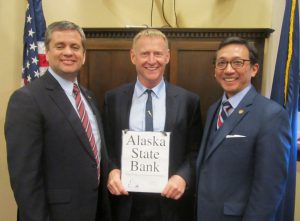The astute observer of United States economic history will recognize the significance of this following link on the subject of policy changes at the Federal Reserve. A new era in regulating finance has begun and our state must now prepare for a new Federal Reserve bonding system.
This article identifies one key component of the financial reform that came after the 1929 stock market crash and subsequent world depression. Margin requirements that were mandated by the 1934 Securities Exchange Act, that limited what portion of stocks or bonds that can be purchased through borrowing, are coming back. Ha, our Federal Reserve is returning to requiring “skin in the game to play.”
The economic historian will recognize this is just one of the first steps that will be taken as the current global derivatives gambling bubble begins its rapid devaluation. Once the bubble pops there will be more steps taken. Reinstating the standards set by the Glass-Steagall Act of 1933, Securities Exchange Act of 1934 and the Commodity Exchange Act of 1936 will be on the list of reregulation.
But this return to regulation will not solve the economic calamity caused by the collapse of the massive worldwide derivatives bubble. Economic historians and our Federal Reserve already know this fact. A new bonding system must restart financial credit for physical production in much the same way as the 1941 Lend-Lease Act that created the financial credit for the World War II war mobilization.
New credit for physical production must be immediately restarted once the bubble pops or humanity will enter a cataclysmic depression and will most likely repeat the same stupidity that leads to global war. It is historically during or after a major war that a new period of financial credit creation begins. But why have a genocidal war? Can we learn from our mistakes?
There is a way out of this mess and understanding economic history identifies the answer. This time when the global depression is leading humanity toward global war we restart the financial credit mechanism before the anger and stupidity starts the war. Duh, are we smart enough to do that?
The ignorance displayed by our current crop of goofy, stupid and self-centered presidential candidates indicates that a financial reform will not come from our next President. The extreme partisan gridlock of the United States Senate and House indicates no reform is expected from there either.
The reform must begin at the state government level. Our state government, in the same way as the rest of our nation’s state governments, has an important mission. As an economic historian in contact with many other historians across our nation I must insist that there is no other way this time around. So here is the first part of the plan.
Each state government creates or enhances existing financial institutions to receive and leverage zero-interest rate infrastructure and productive capacity bonds sold through a new discount window at the United States Federal Reserve. Using the local decision making process of bonding and then leveraging those bonds with the Federal Reserve will restart financial credit for infrastructure, agriculture and industry.
The plan being discussed in Alaska is to create the Alaska Infrastructure Fund, managed by the Alaska Permanent Fund and under the direction of Alaska’s Governor and the Alaska Legislature to leverage bond, grant and share packages and to facilitate the receipt of United States Federal government funding and grants and United States Federal Reserve bonding, grants and share buying.
Also under discussion is that future Alaska Infrastructure Fund shares shall be sold to investors and offered to Alaskans at a discount through a checkbox on the Alaska Permanent Fund dividend application.
The State of Alaska will request a minimum of 5 billion dollars per year in state, municipal and port authority infrastructure and productive capacity zero-interest rate bonding, grants and the purchase of shares through a new discount window at the United States Federal Reserve.
In the first few years, most of the credit and grants in Alaska will be used to invest in a natural gas pipeline and related gas conditioning and liquefaction plants and the Susitna Dams and related electrical transmission systems; but many other types of infrastructure and productive capacity will be included.
The goal is to have a science and infrastructure-led recovery so our university must also participate with the recommendation of building a plasma physics institute at the University of Alaska Anchorage to advance our oil, gas, mining and new manufacturing industries.
This science and infrastructure-led recovery is the only available Federal Reserve policy option once the derivatives bubble begins its rapid decline. State governments must be ready to receive these funds in a way that guarantees the long-term success for the new bonding system.
The 5 billion dollars per year in new federal money received in Alaska effectively ends a large portion of our budgetary problem by taking most infrastructure spending off the budget for many years. Taxpayers can also see dramatic relief through the shifting of school infrastructure into federal bonding.
Is the solution really that simple and straightforward? Yes, but the biggest problem is that we live in a time when the economic teachings of the old British East India Company are once again dominating our economic discussions.
There will be some politicians who refuse to participate in this reform because of their belief in this old stupidity. Quite simply, opponents of a new science and infrastructure bonding system must not be elected again. Let us have a good discussion about naming the politicians who must not win their next election so our state can participate in the new Federal Reserve bonding system.
Read the following link and let me know what you are thinking.


